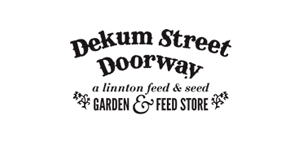Since 2011, Portlanders have been able to put food scraps in our green roll cart along with yard waste. All types of food scraps are welcome, including peels, pits, bones, shells, plate scrapings, leftovers, and spoiled food. Food scraps add nutrients to the finished compost that farmers and backyard gardeners add to their soil. Nutrient-rich compost keeps soil healthy, and healthy soil grows healthy plants with less water and fewer chemical fertilizers. Plus, when you throw food in the garbage, it goes into a landfill where it creates methane gas, which worsens the climate crisis. That’s why it matters that all your food waste gets into the compost bin, from carrot peels and sandwich crusts to long-forgotten leftovers hiding in the back of the fridge.
Here are some tips—and a few rules—about our city-wide residential curbside composting.
Choose a container that’s easy to empty and clean. Reuse a large yogurt tub or Tupperware™-type container with a lid. Or purchase a countertop compost container from your local hardware or home goods store.
Line your container with paper or use a BPI-certified compostable bag to reduce mess. If using bags, the 2-3 gallon size should fit countertop containers.
Empty & rinse regularly. Empty food scraps from your kitchen container into your outside bin throughout the week.
Some people empty daily, others may only empty every few days without it getting smelly – it depends on the type of food scraps. But even if there are only a few scraps in the container, don’t let them sit for more than a few days to prevent smells and avoid fruit flies. Or store your container in the freezer and empty whenever you like.
Wash weekly (at least). Give your container a quick rinse every time you empty it, and then give it a good scrub with soap, or run it through the dishwasher, at least once a week.











